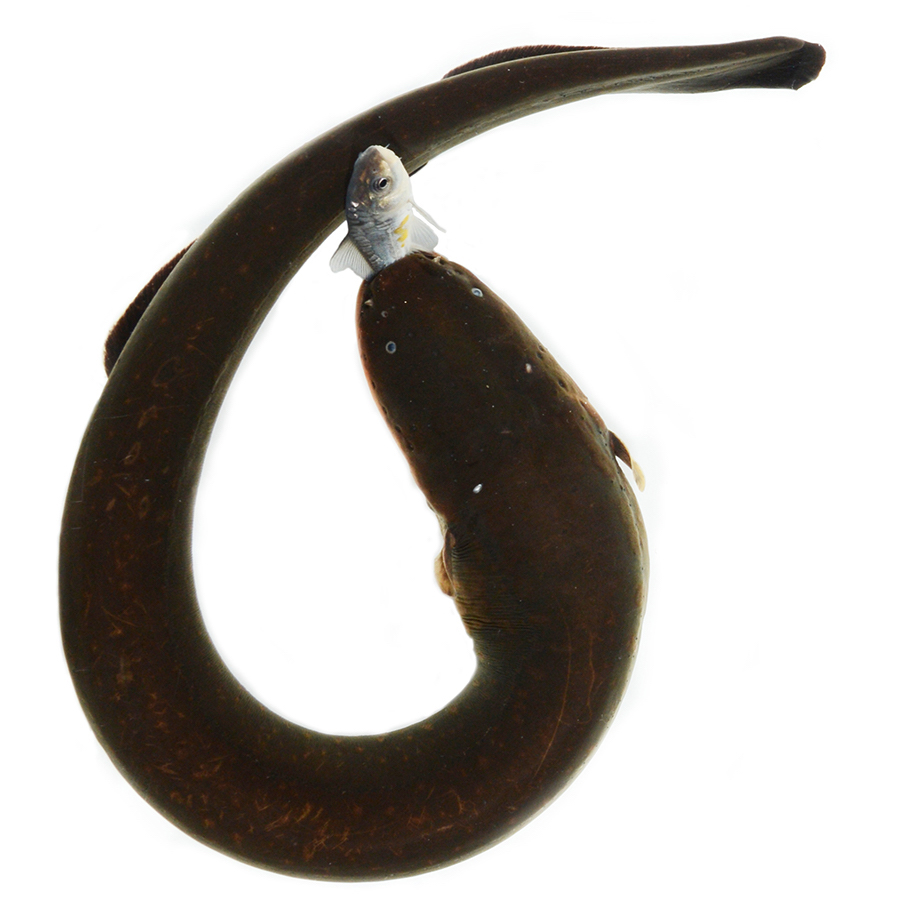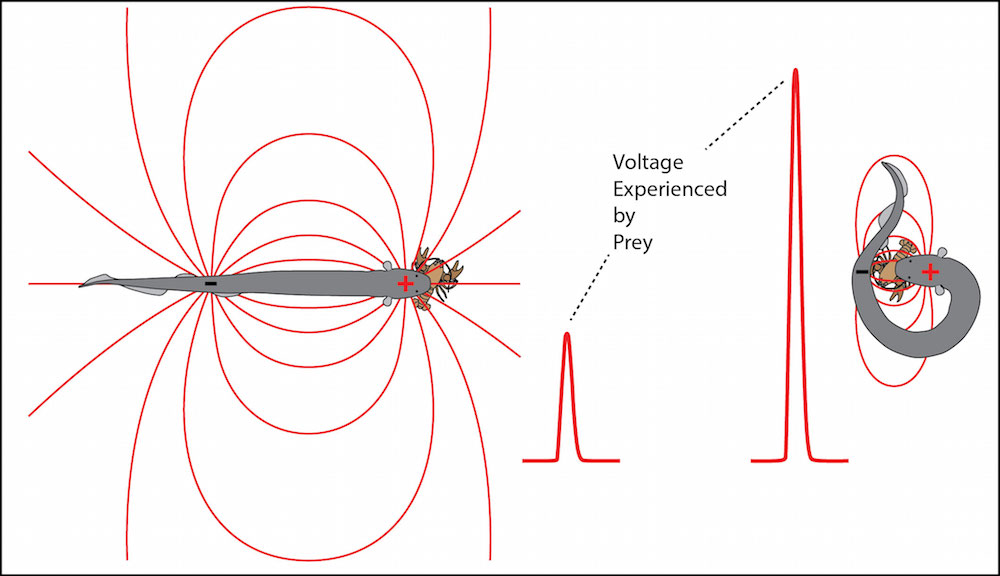Electric Embrace: Eels Curl Up to Supercharge Shocks

It's kind of like walking straight into an electric fence, or getting shot with a stun gun. That's how one biologist describes the experience of getting zapped by an electric eel.
"You wouldn't voluntarily do it over and over again," said Kenneth Catania, a professor of biological sciences at Vanderbilt University in Nashville, Tennessee, and author of a new study about the electric eels' shocking behavior.
Catania has been zapped a few times since he began studying the electric eel (Electrophorus electricus), a fish that's indigenous to the murky waters of the Amazon. Endowed with three electricity-producing organs, E. electricus can send a pulse, or volley, of high-voltage electricity through the water toward prey items. These shocks aren't meant to kill the prey, just demobilize it so the eel can more easily consume its victims, Catania told Live Science. [Video: Watch an Electric Eel Curl Around Its Prey]
To envision how the eel uses its electric charge, try picturing the critter's long, thin body as a skinny magnet. Like a magnet, the eel has two ends, or poles. When the animal sends out an electric pulse, most of the charge comes from its head, which Catania calls the "positive pole." The eel's tail serves as the "negative pole," sending out a much weaker electric pulse than the head, Catania said.

Most of the time, E. electricus just needs the charge from its head to demobilize prey. However, the tail end of the eel is actually quite important, Catania's new study shows. By bringing its tail around toward its head, an electric eel can double the strength of the electric pulse it sends out into the water, allowing it to demobilize larger prey items, the study found.
To measure the energy output of a curling eel, Catania rigged up a sort of eel chew toy by attaching a dead fish to a piece of wire. The fish was fitted with electrodes that could measure the voltage produced by the eel. Then, Catania stuck the chew toy in the tank with the eel and wiggled the toy around, simulating struggling prey. Sure enough, the eels tended to wrap themselves around the fish, and when they did so, they delivered at least twice their usual zap of electricity, Catania found.
To understand how the eel doubles its charge, try picturing the critter in the shape of a horseshoe magnet. In one of these U-shaped magnets, the north and south poles of a single magnet are brought into close proximity to one another, which creates a strong magnetic field. When the eel curls up in this horseshoe shape, something similar happens — it produces a strong electric field.
Sign up for the Live Science daily newsletter now
Get the world’s most fascinating discoveries delivered straight to your inbox.
"When the eel curls its positive and negative poles together and sandwiches the prey in between, you get a focusing of the electric field," Catania said.
But electric eels don't actually double the amount of electricity they produce when they go after large prey; they just direct the charges from both ends of their bodies to one specific area, which makes the charge feel more powerful to unfortunate prey items. This is a good tactic for an eel to use, said Catania, adding that the zappy critters don't have to expend any more energy than usual when they curl up like this, but they could still end up with a bigger meal.
Small eels (some are just a few inches long) do a lot of curling, said Catania, who pointed out that these little animals need to focus their zaps to stun prey into submission. But big eels, which can measure a meter or two in length, engage in this behavior, as well. Catania said he'd like to know more about what kinds of prey items these large eels can take down with their powerful electric charges.
"There's virtually no evidence of what electric eels actually eat. But these guys get really big, and they live in the Amazon, where there's a huge diversity of potential prey," said Catania, who added that electric eels could wrestle all kinds of creatures. He said he hopes his new study might get other researchers wondering just what the electric eel is capable of hunting in the wild.
Follow Elizabeth Palermo @techEpalermo. Follow Live Science @livescience, Facebook & Google+. Original article on Live Science.

Elizabeth is a former Live Science associate editor and current director of audience development at the Chamber of Commerce. She graduated with a bachelor of arts degree from George Washington University. Elizabeth has traveled throughout the Americas, studying political systems and indigenous cultures and teaching English to students of all ages.










